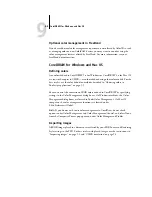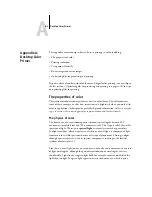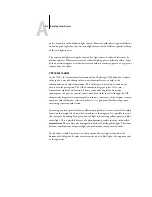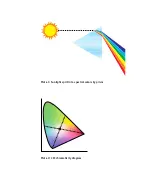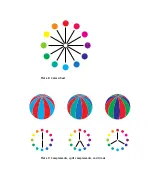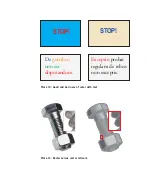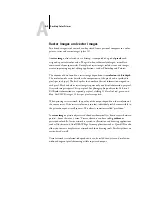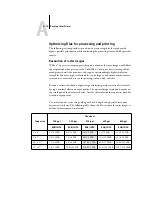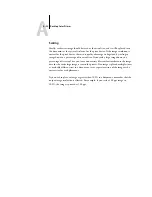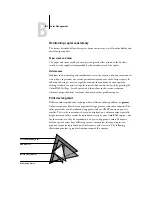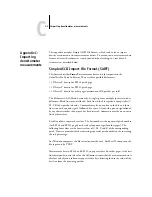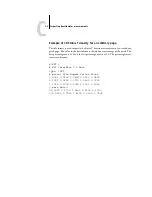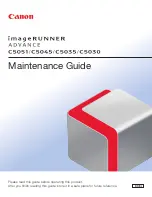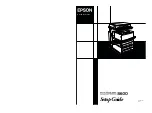
A
A-6
Desktop Color Primer
Halftone and continuous tone devices
Halftoning is used in offset printing to print each process color at a different intensity,
allowing millions of different colors to be reproduced using only the four process
colors. Depending on the required intensity of a given color, toner is placed on paper
in dots of different size. The grid of dots used for each toner color is called a screen.
Halftone screens are aligned to unique angles designed to eliminate interference
patterns called moiré that can arise with halftoning.
Some color print devices are commonly referred to as continuous tone (or “contone”)
devices. They do not use traditional halftone screen patterns and angles. Contone
devices are capable of varying the intensity of individual dots.
Even if your color printing is done exclusively on the ColorPASS, you will encounter
concepts from offset printing if you use high-end graphics applications. For example,
color controls in illustration applications such as Illustrator are geared toward
specifying color for offset printing using process and
spot colors
. Many applications
allow you to specify the screening used for each printing plate.
Using color effectively
The ability to print in color can greatly increase the effectiveness of your message,
whether you are printing a presentation or a newsletter, or proofing an ad concept that
will later be printed on press. Some potential benefits of using color include:
• Conveying information rapidly by using color cues
• Making use of the emotive aspects of different colors
• Increasing impact and message retention
Color can also be a source of distraction and discord if it is used poorly. This section
outlines some tips and concepts that will prove useful as you approach designing color
materials.
Summary of Contents for ColorPASS-Z5000
Page 1: ...ColorPASS Z5000 COLOR GUIDE I N C L U D E S F I E R Y S O F T W A R E ...
Page 2: ......
Page 6: ......
Page 96: ......
Page 148: ......
Page 160: ......
Page 172: ......
Page 175: ...Plate 1 Sunlight split into spectral colors by prism Plate 2 CIE chromaticity diagram ...
Page 179: ...Plate 5 Additive color model Plate 6 Color monitor ...
Page 180: ...Plate 7 Subtractive color model ...
Page 185: ...Plate 8 Color wheel Plate 9 Complements split complements and triads ...
Page 198: ......
Page 206: ......
Page 208: ......


